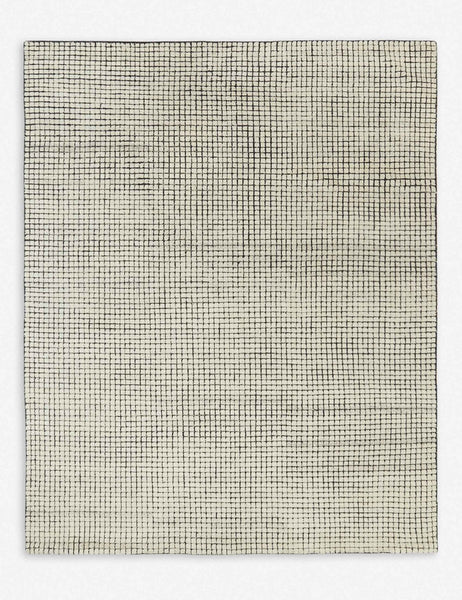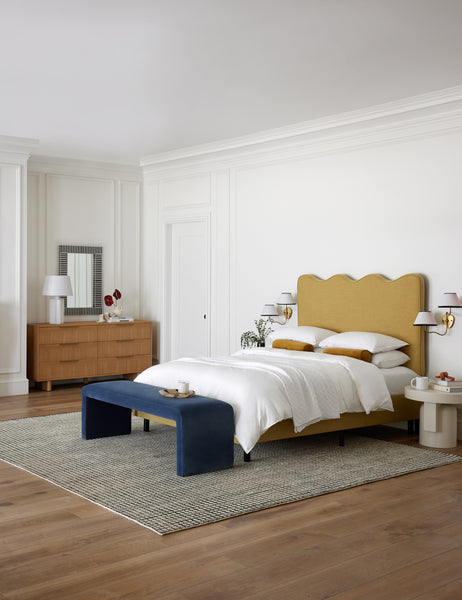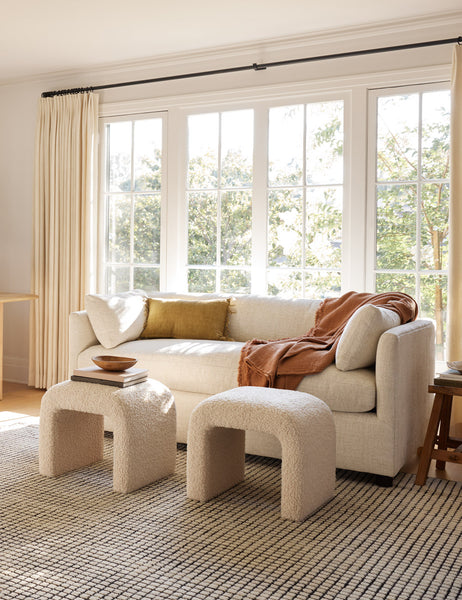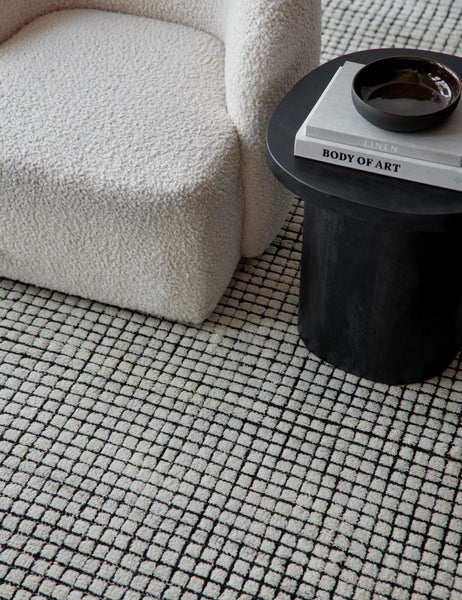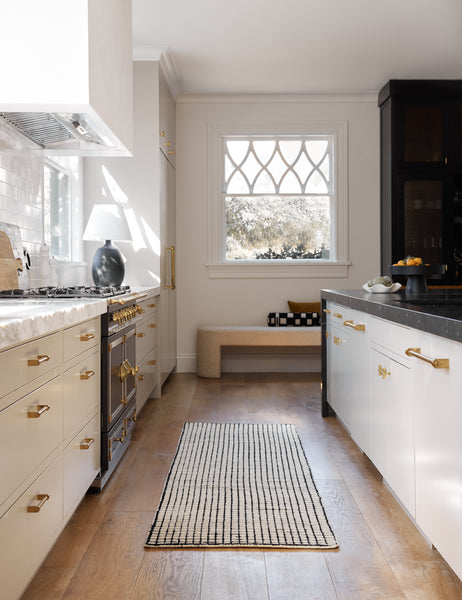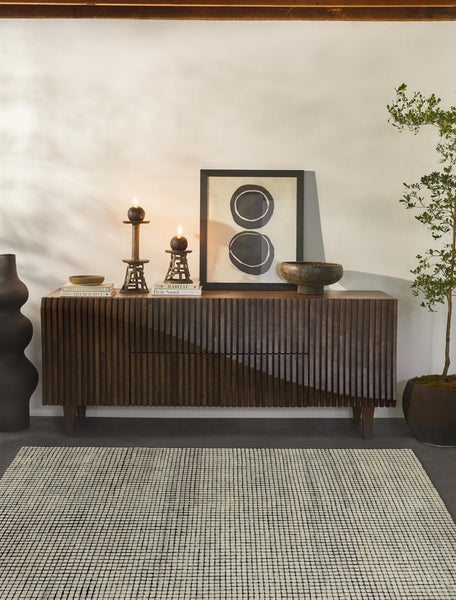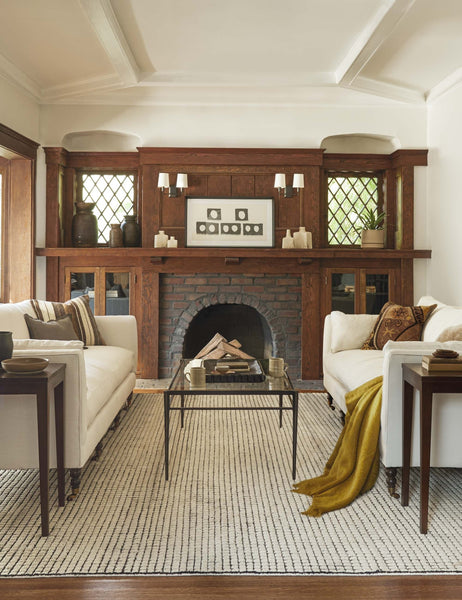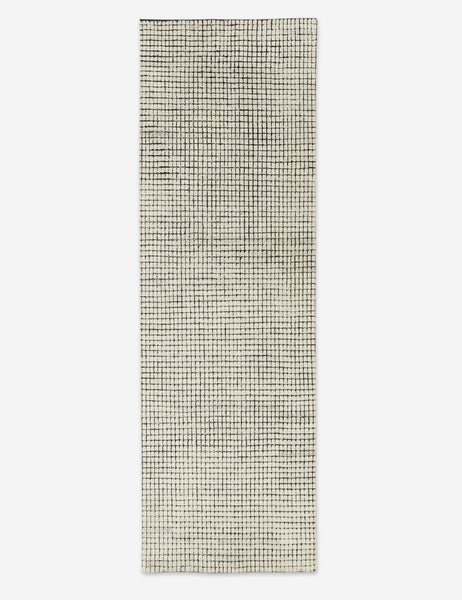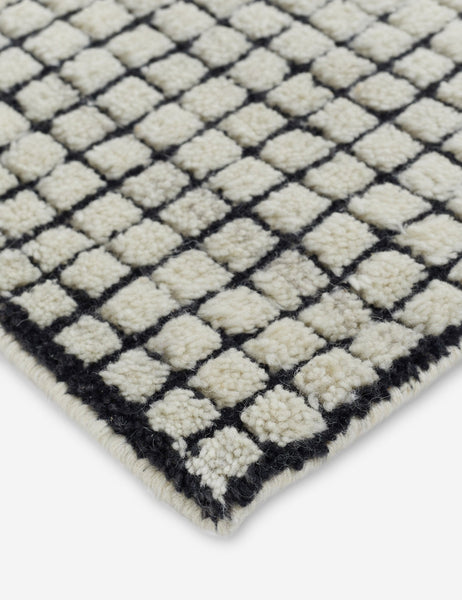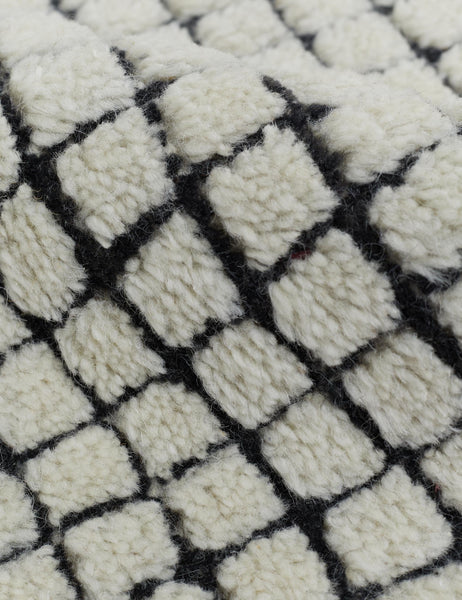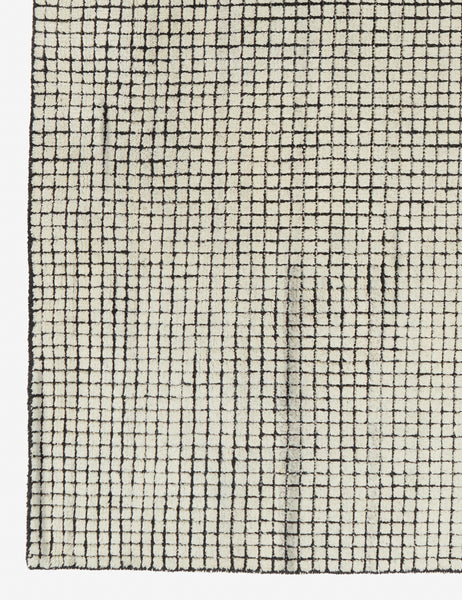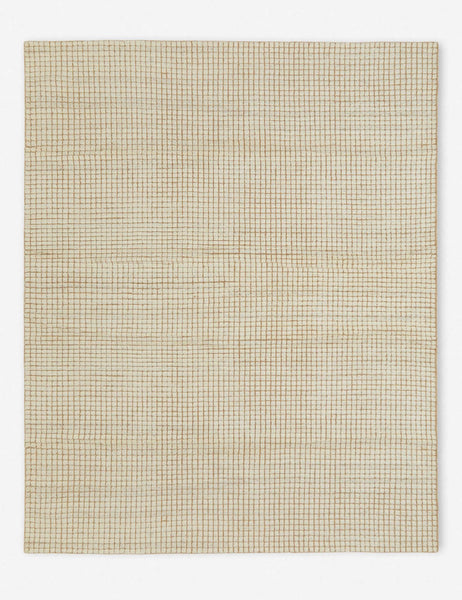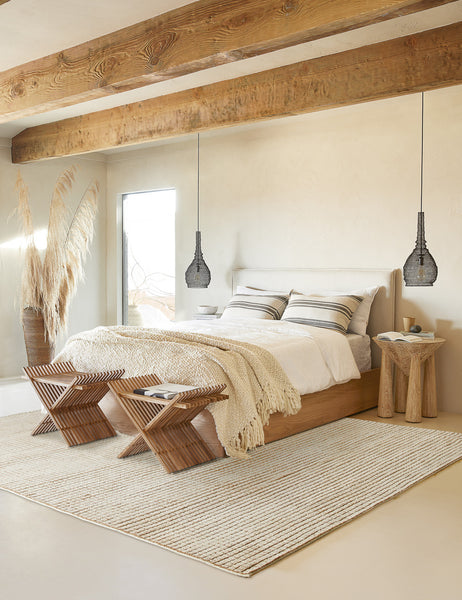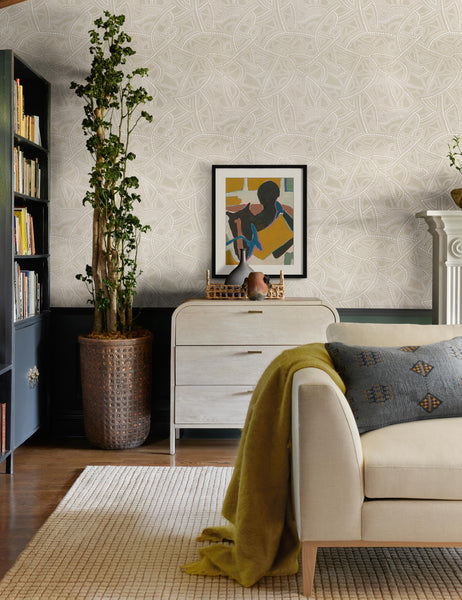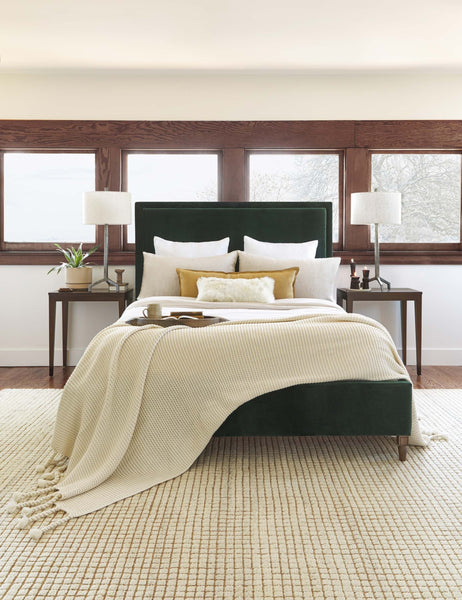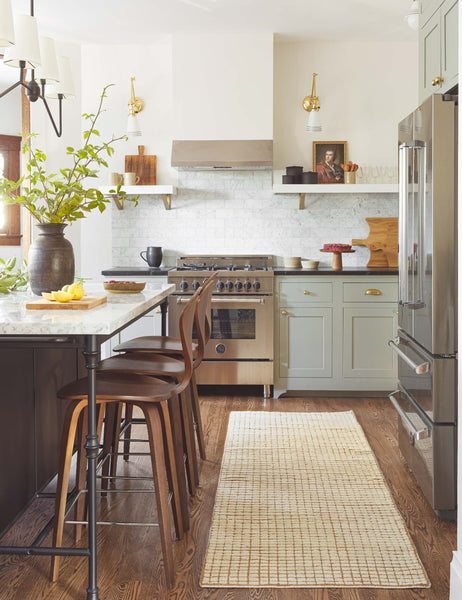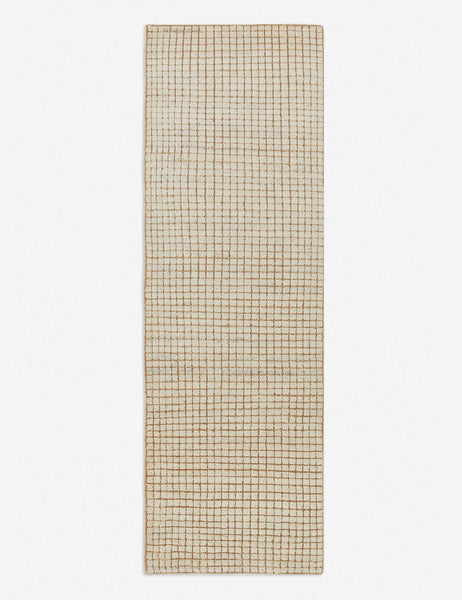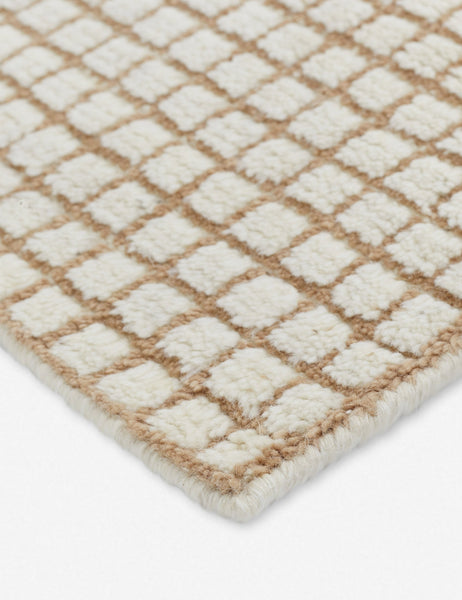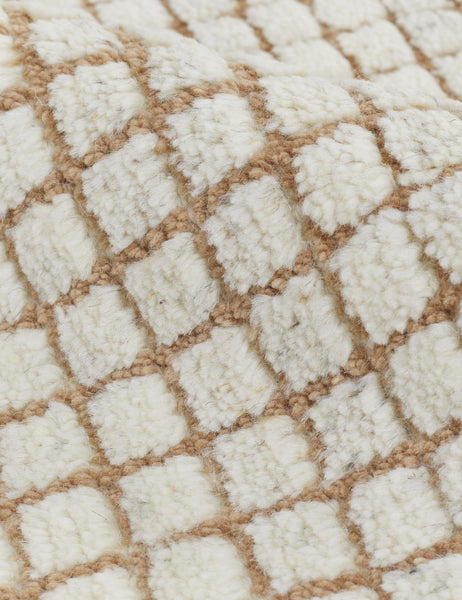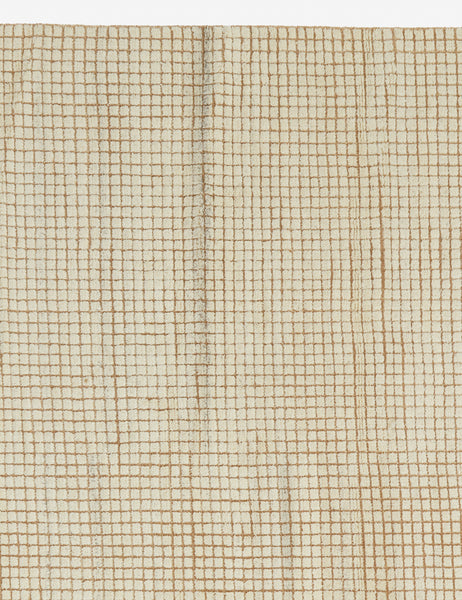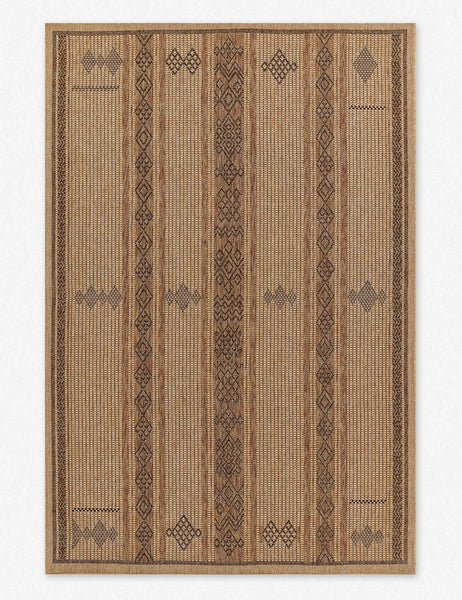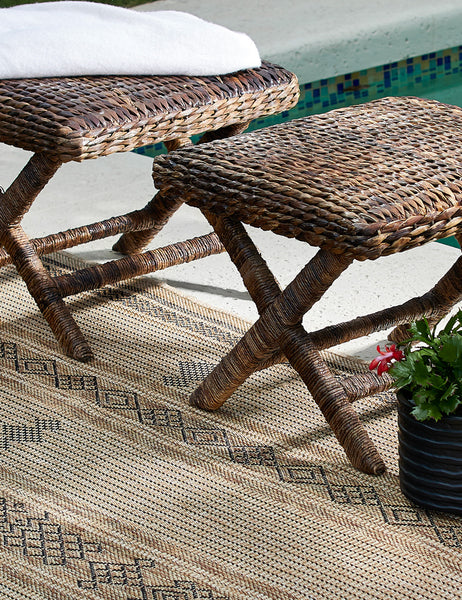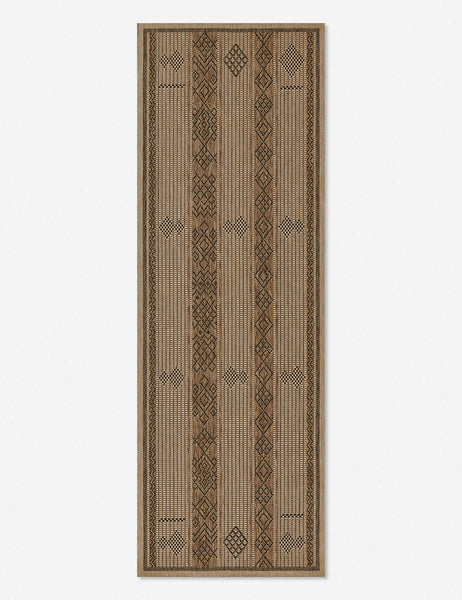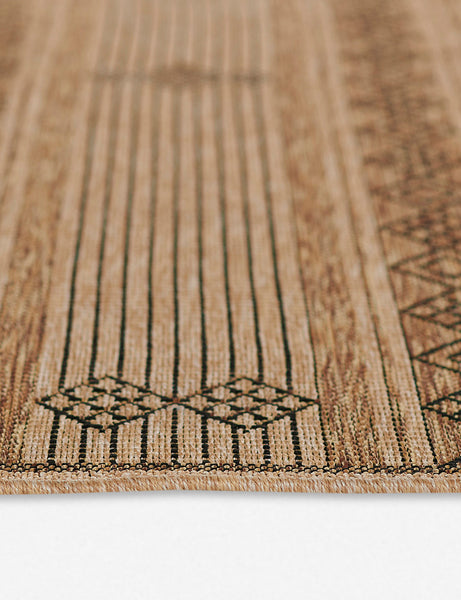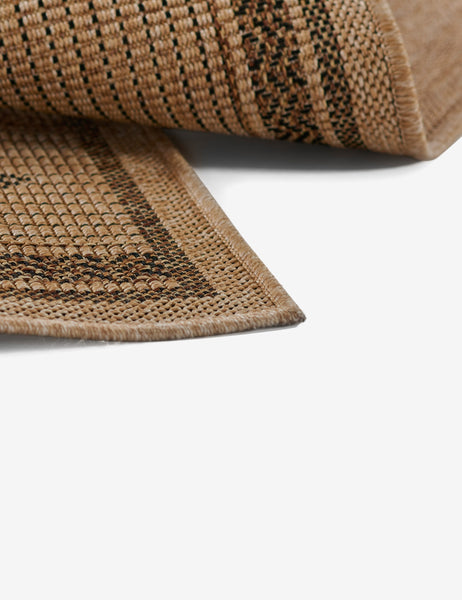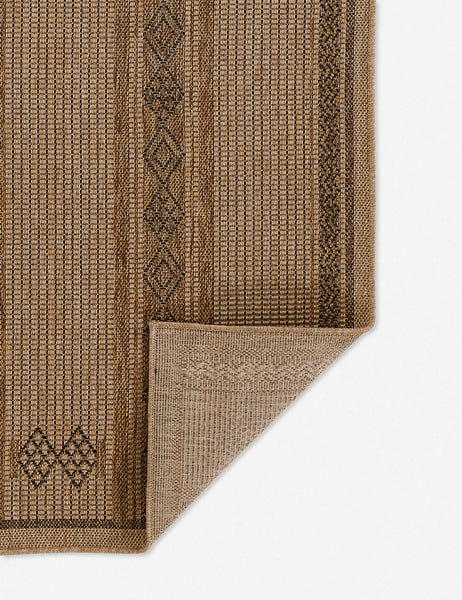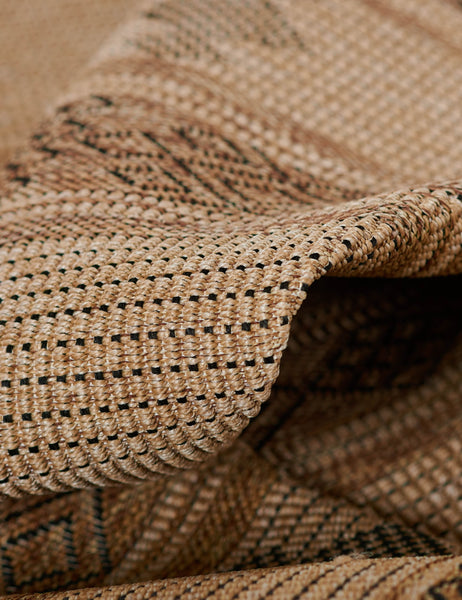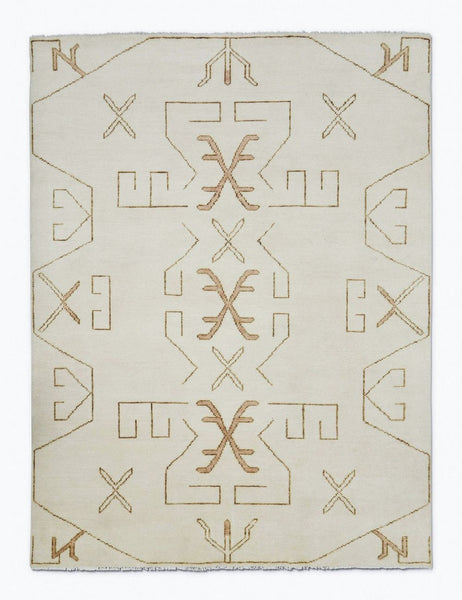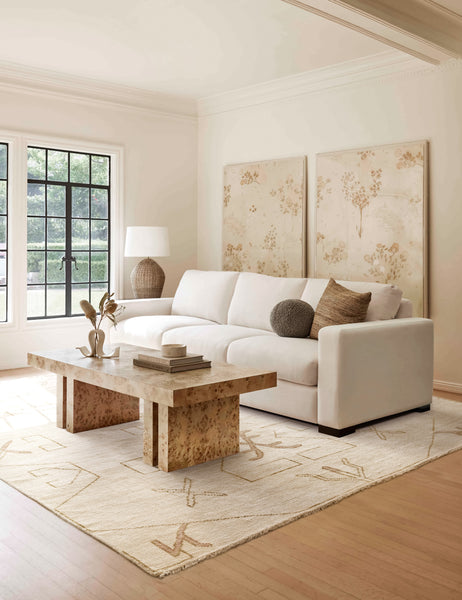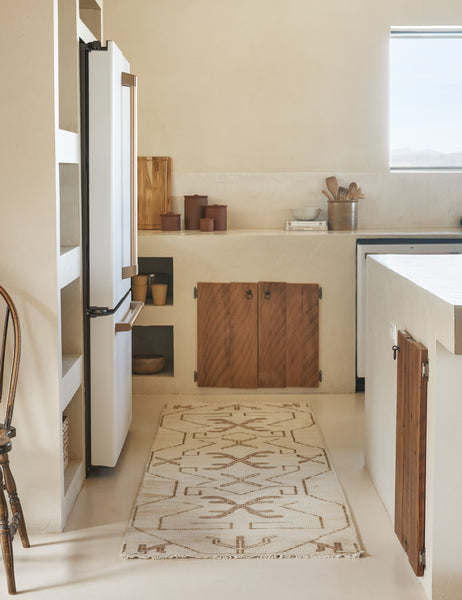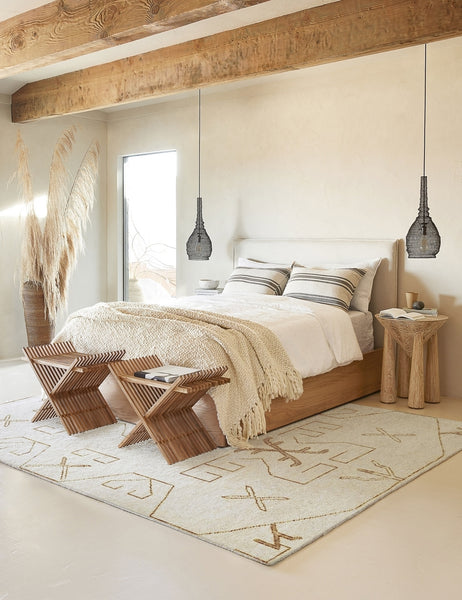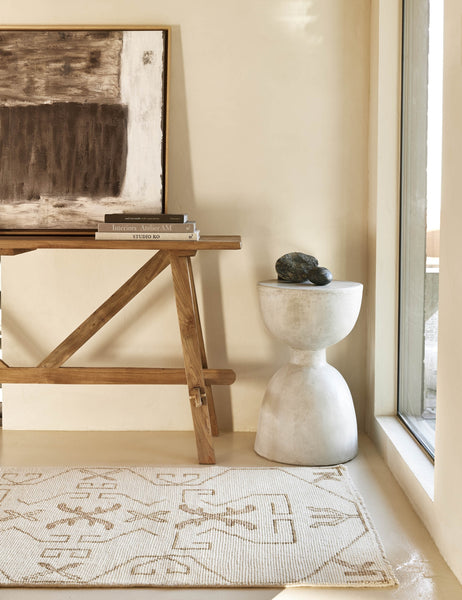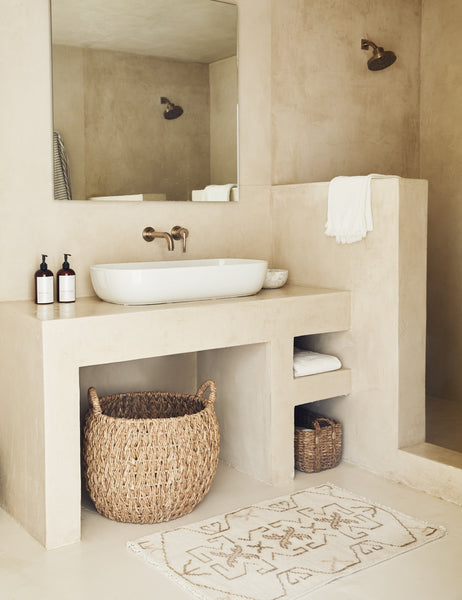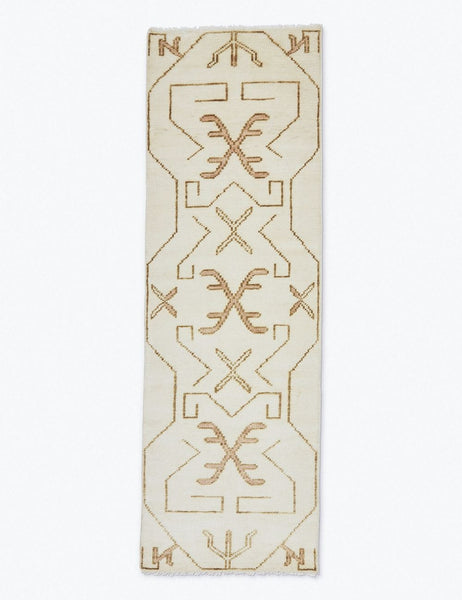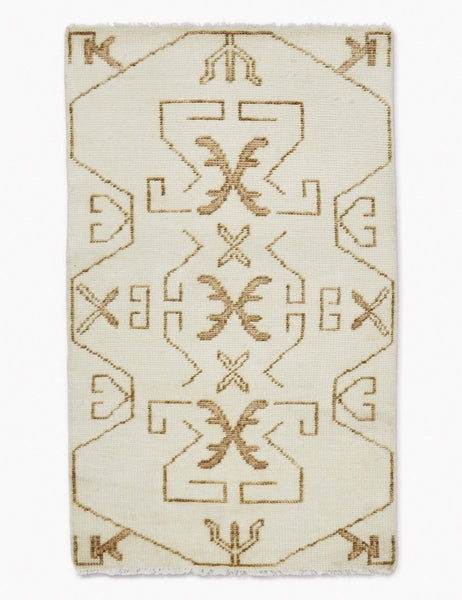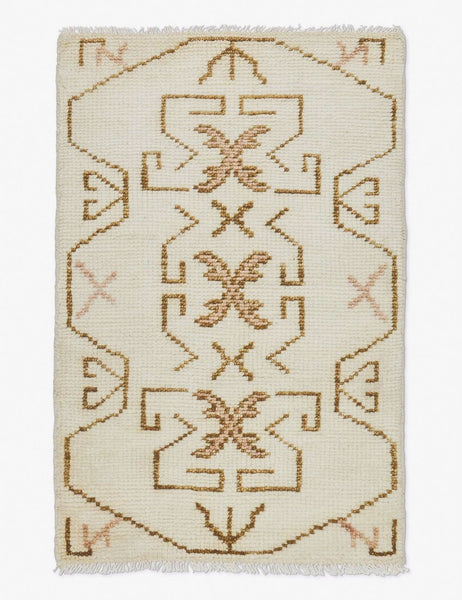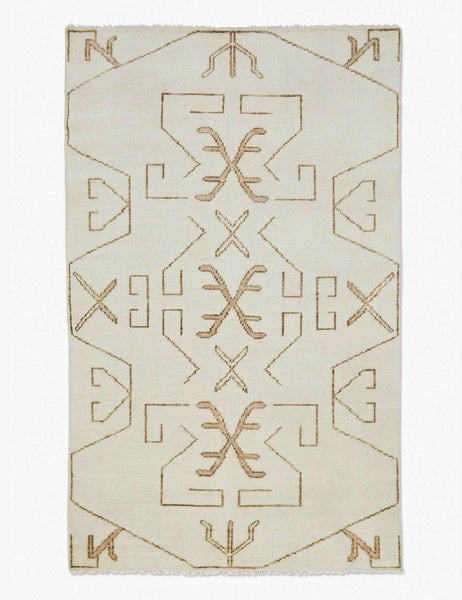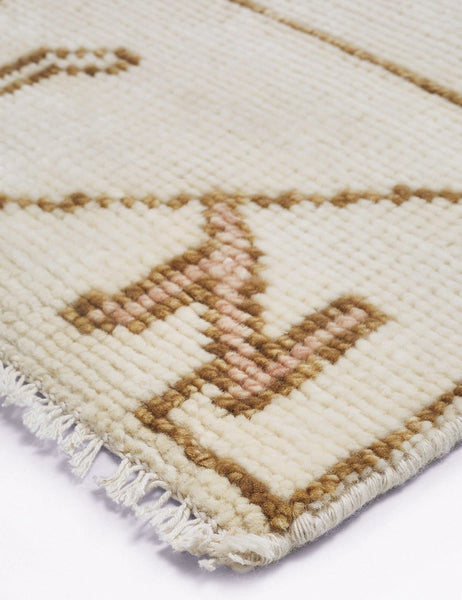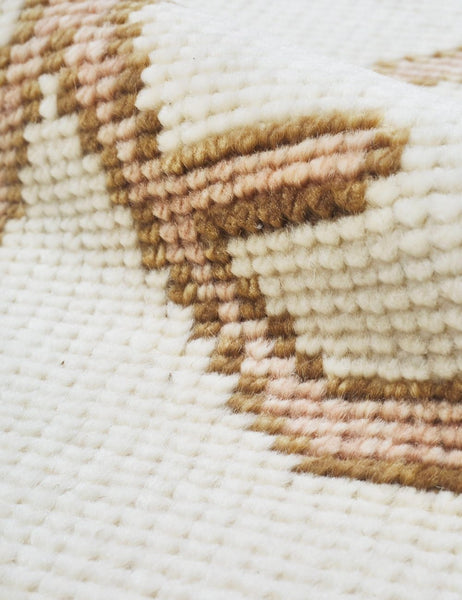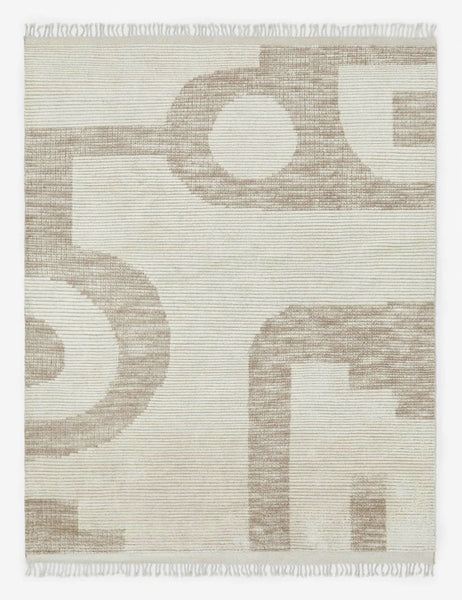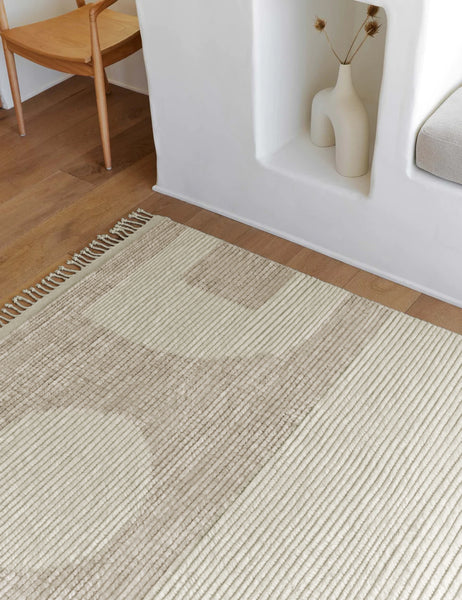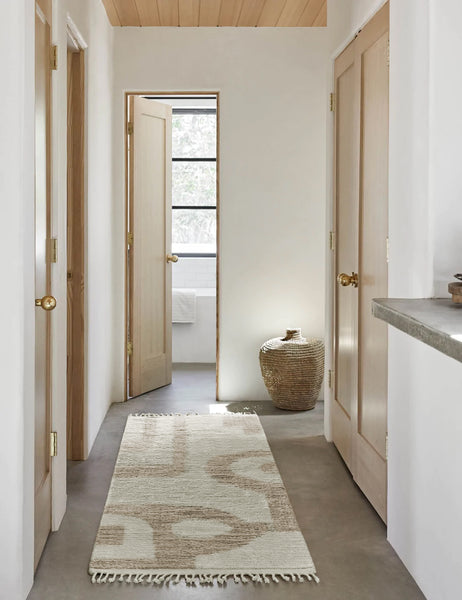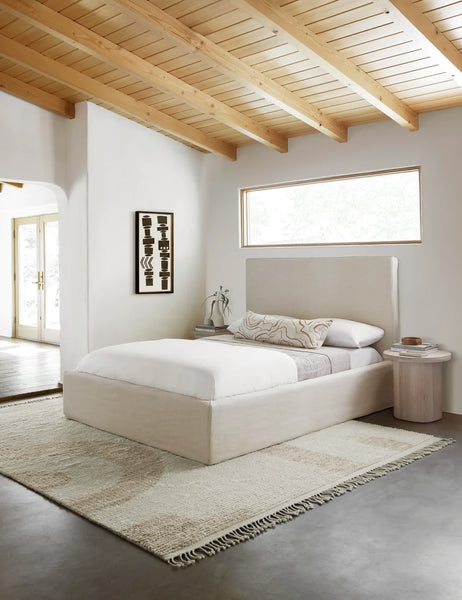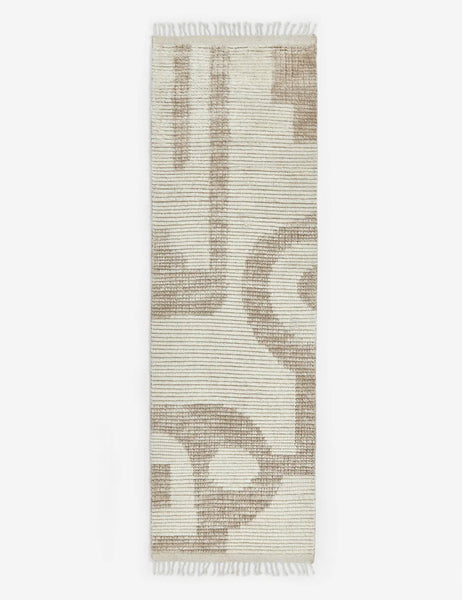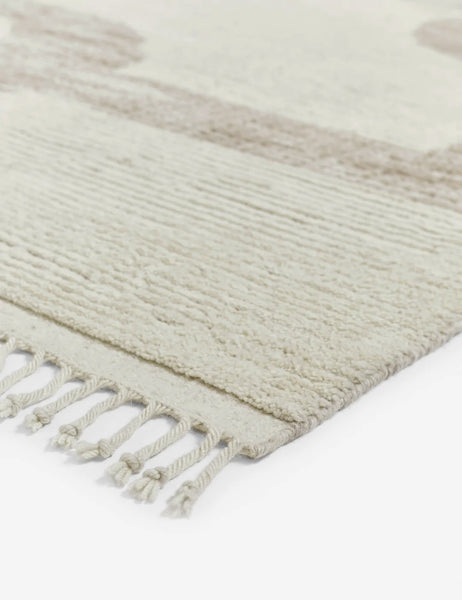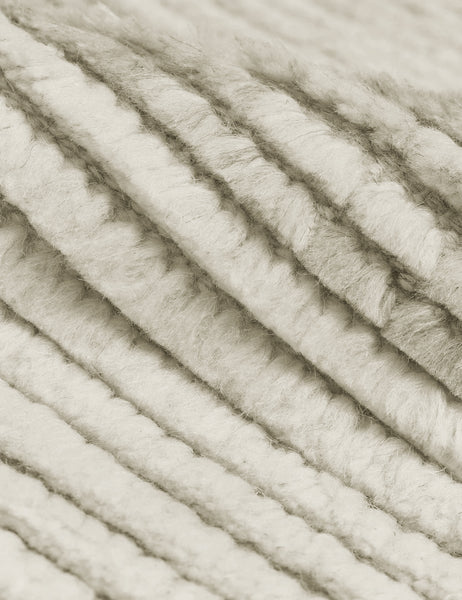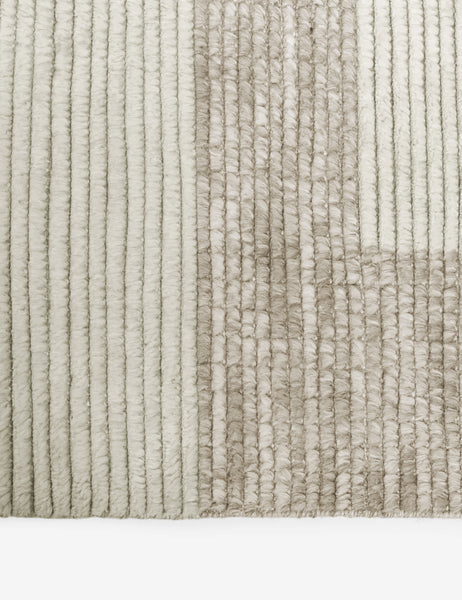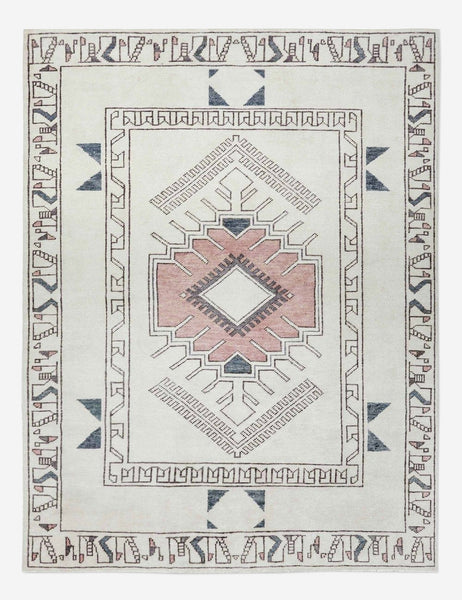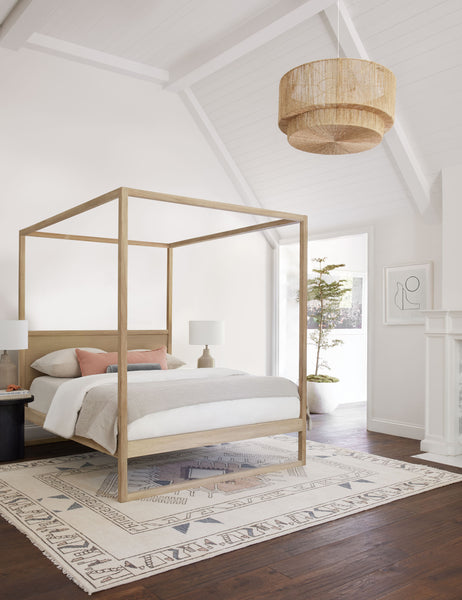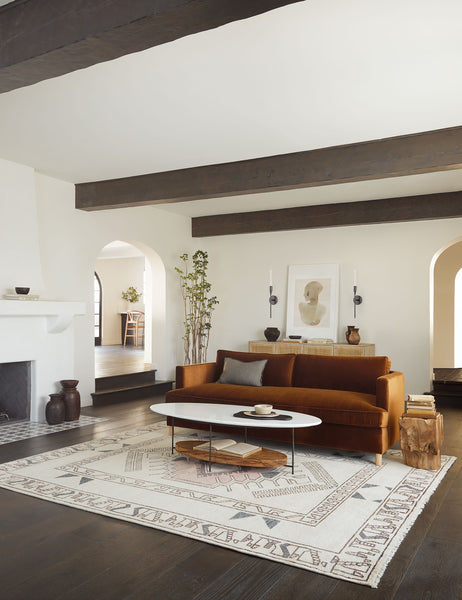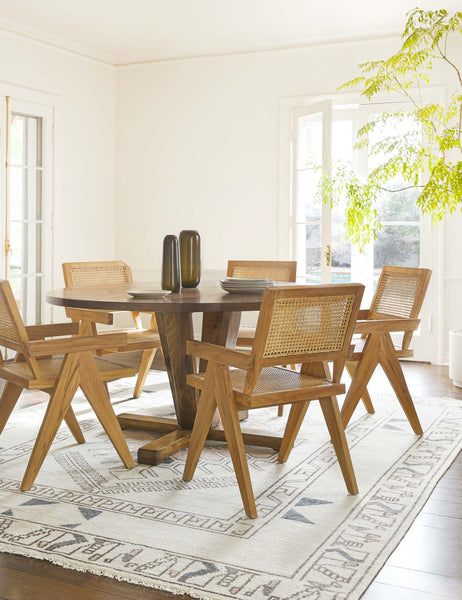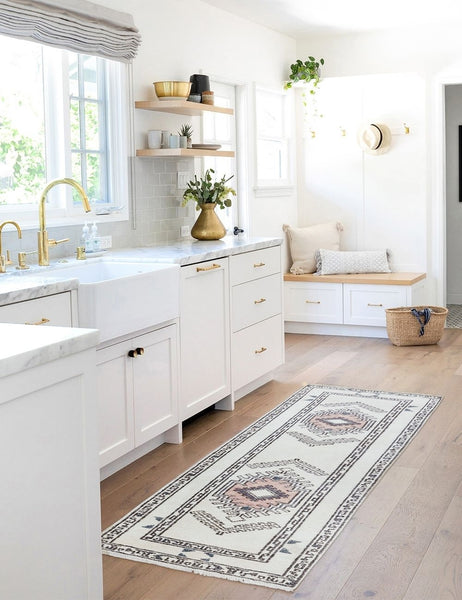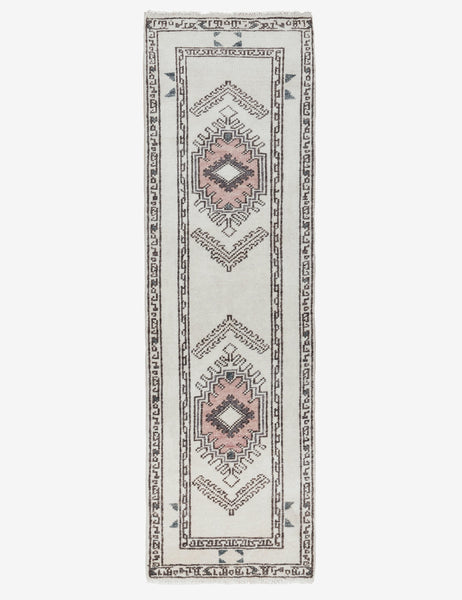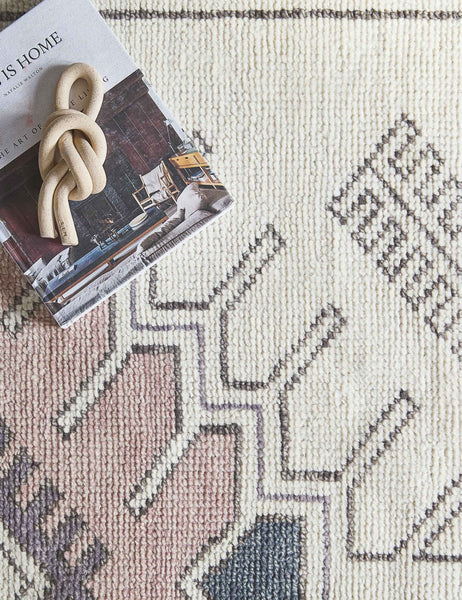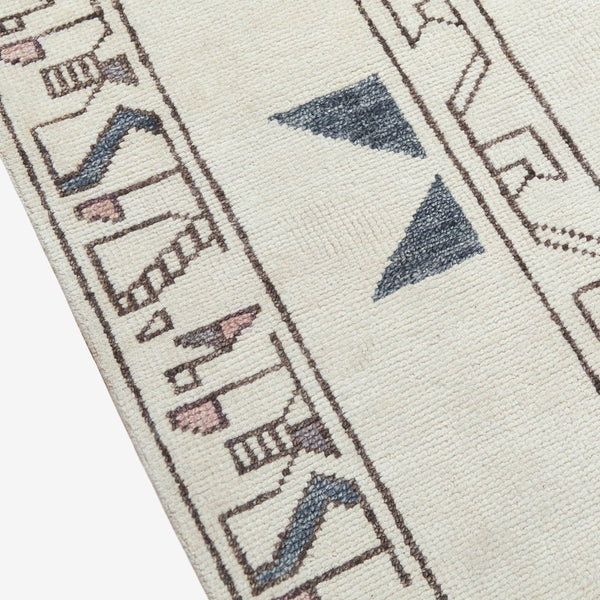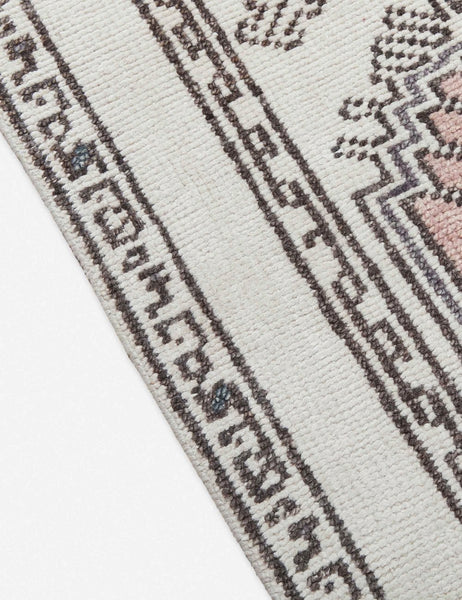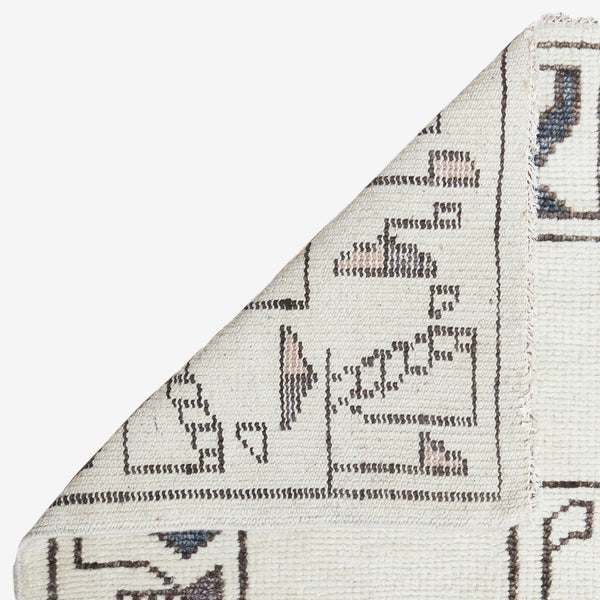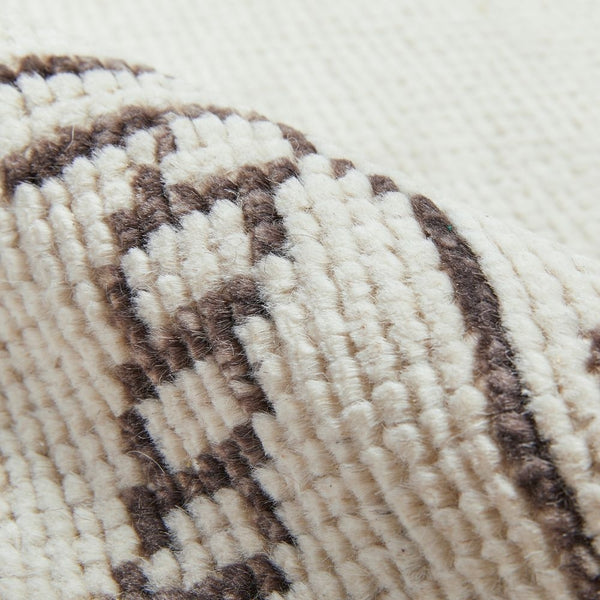Styling smaller rugs and runners in your home can be deceptively challenging. Working with small-scale, in-between, or transitional spaces means sizing and materiality will have to be taken into account, along with what design elevates your look. Now that we're in the middle of winter and comfort and warmth are top priorities when refreshing your home, it's the perfect time to layer these smaller rugs. I'm Kelley Mason, Lulu and Georgia's Manager of Creative + Content and resident stylist, and I'm here to help. I've put together a brief guide to show the places in your home best suited for smaller rugs and tips on selecting the right piece for you. I'll go space-by-space—moving from the kitchen to the bathroom to the bedroom and finally, to the entryway. The main takeaway is considering the space itself and how each rug or runner will be used. For instance, will the piece be placed in a high-traffic area like an entryway or foyer, or will it deal with excess moisture in a kitchen or bathroom? Read on for more of my styling tips, and check out our advice on how to measure a rug.

1. In the Kitchen
For areas with a lot of foot traffic, place small rugs in front of the sink—or wherever you stand most. Galley kitchens are perfect for adding a runner or smaller rug because they run the entire length of the walking area between the two countertops. Another important note is that since spills are more prone to happen in a kitchen, choose a rug that can stand up to the mess. Darker-toned rugs are a great choice here, as are indoor/outdoor rugs because they're easier to clean.
Uma Hand-Knotted Wool Rug
$458.00
Ember Indoor / Outdoor Rug
$58.00
Hidara Flatweave Wool Rug
$119.00
Evet Hand-Knotted Wool Rug
$99.00

2. In the Bathroom
You don't need to go with the traditional bathmat in the bathroom. I love bringing in a smaller rug with a pop of color and a geometric design to add visual appeal. Wool rugs work great, just so long as they aren't left in standing water. For a single vanity, a 2' x 3' or 3' x 5' rug works great, depending on the size of the room. Two 2' x 3' rugs or a runner are best for a double vanity. You can also add a rug outside of the shower or next to the bath—but again, just make sure it's not left in standing water.
Cloud Loom Bath Mat by Coyuchi
$54.60
Esha Hand-Knotted Wool Rug
$448.00
Masha Mat
$38.00

3. In the Bedroom
No matter the size, I love incorporating cozy shag rugs or high-pile rugs in your bedroom. A couple of smaller rugs on either side of your bed are ideal if you don't have the space for a larger 8' x 10' rug underneath your bed. If you choose to flank your bed with a small-scale rug, a 2' x 3' or 3' x 5' size will do. That way, you'll ensure your feet land on soft ground when you get out of bed in the morning.
Taza Handwoven Wool Rug
$47.00
Daelon Rug
$54.00
Nomad Rug by Élan Byrd
$279.00
Cabin Wool Rug by Jenni Kayne
$849.00

4. In the Entry
Consider the use of the rug for the entry, and if you live in a cold or wet climate, choose one that withstands moisture well. If you plan to have everyone remove their shoes at the door before entering the rest of the household, a higher pile rug next to your entryway console is both helpful and inviting to your guests. In a larger foyer entryway, plan to keep the rug's edges about 12 inches from walls or furniture. That's meant to keep the rug from feeling either too big or small in the space. I also love layering a smaller patterned rug on top of a solid jute rug in an entry for more depth and texture.
Giles Hand-Knotted Moroccan Shag Rug
$499.00
Zehra Hand-Knotted Wool Rug
$149.00
Della Rug
$54.00

